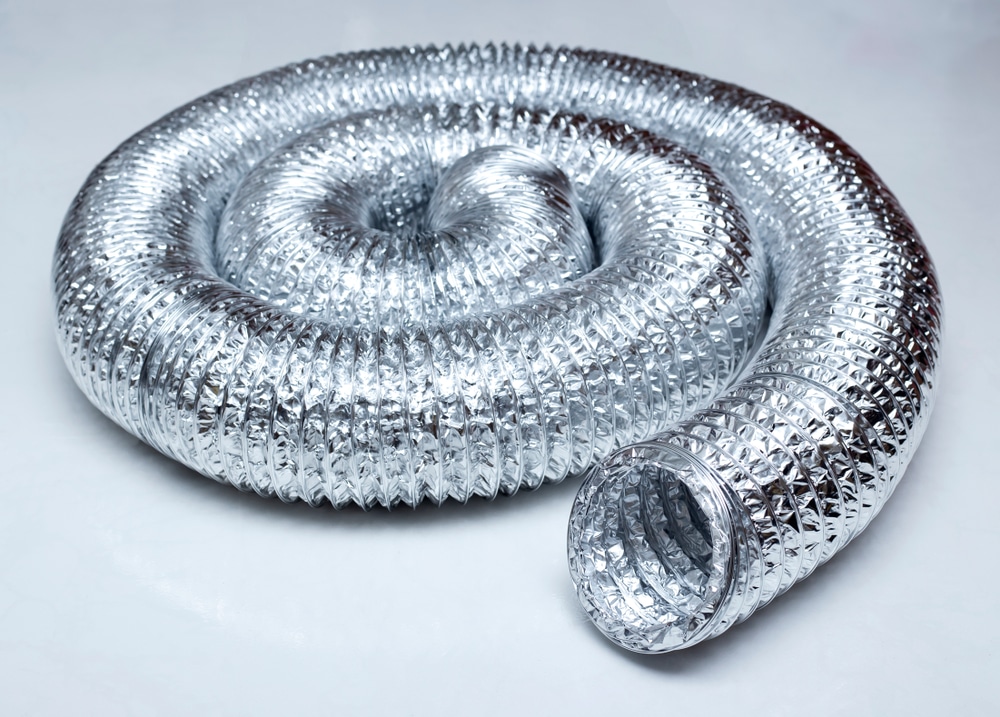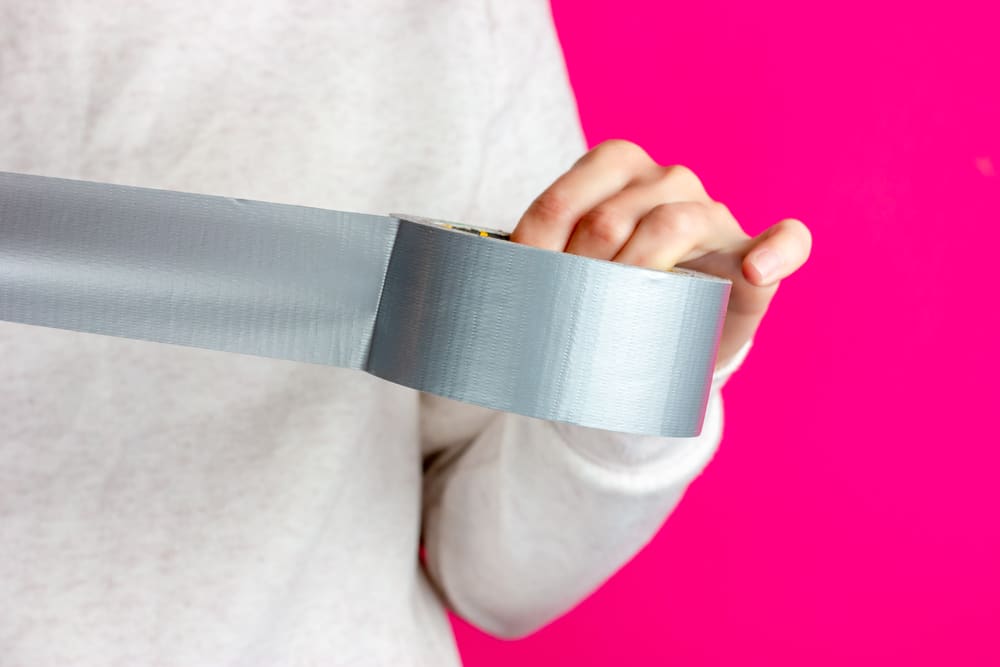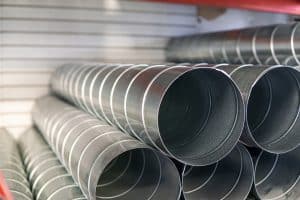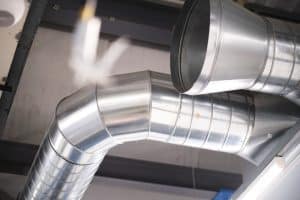How Do You Seal Plastic Ductwork?
In order to prevent mould, fresh air should always be introduced into your dwelling on a daily basis, as it helps to regulate temperature and reduce condensation. Introducing fresh air can be as simple as having a ventilation routine, or installing extractors or PIV systems.
For those taking this route and choosing to install themselves, we will answer the question ‘How do you seal plastic ductwork?’ When it comes to sealing ductwork, it can be done by an individual (if they know what they are doing.)
We at I-Sells are here to provide the answers you need whilst also supplying you with all the information you need in order to combat mould and have a well-ventilated home.
Alongside mould control, our venting and ducting solutions also aid in the removal of condensation, retention (and in some cases addition) of heat, and the removal of stale air in your home.
Why we need ducting
To understand the necessity for ducting, we must understand the role of the technology it supports the function of. That function is ventilation.
Ducting aids in the function of ventilation appliances (such as an extractor fan, cooker hood, or tumble dryer) by helping to facilitate ventilation in the home, by promoting airflow whilst decreasing levels of humidity. This is particularly important as humidity is a key factor in the formation & spreading of mould in your home.
Some ventilation purely extracts the air of the room it is in, whilst others extract the inside air and then recycle and return it.
Signs your ducting isn’t working
Improper ventilation of the home usually leaves signs you can notice, which include:
- There is almost always condensation on the windows or walls
- Odours linger in the house for extended periods of time, especially in the kitchen or bathroom
- High humidity, leading to wood rot or mould
- You can’t see it working (in the case of a cooker hood for example, you can’t see smoke or steam travel directly up it)
Ducting is used in order to create an isolated airflow for extracted air to travel through. These systems aid in creating a home with fresh air and help to regulate the temperature in order to prevent the cultivation of mould and dampness.
No Ducting means more mould
Mould reproduces from tiny spores. The spores float through the air and deposit on the surfaces. Under adequate temperature, moisture, and nutrient conditions, the spores can form new mould colonies.
condensation is not the only cause of mould, it can occur from leaks in the structure of a building too.
Mould can severely affect your immune and respiratory system, as the spores are easily breathable and not obvious to see through the human eye.
If you have found mould in your home, you need to assess if this is your landlord’s responsibility (for example it could be from a leaking roof that needs repairing). Or if the damp is caused by improper ventilation. To assess your options, click here.
Ducting types

Round Pipe:
Round ducting has the highest airflow performance, this is due to a wider diameter increasing its free area. The lack of corners also decreases resistance within the pipe, which allows for higher airflow rates and higher rates of ventilation.
It is recommended for most applications where space is available for installation. Its main purposes are for long ducting runs, whole-house ventilation systems, HVAC systems, bathroom, toilet and utility room extract fan venting, or any occasion where high rates of extraction are required.
Round PVC ducting pipe can be used for venting exhaust odours and steam from cooker hoods, although flexible ducting may be easier to install in many instances.
Sizes are available from 100mm, 300mm, 500mm and 600mm diameters, with sizes between these dimensions also available. Both round and flat ducting have smooth inner surfaces to reduce air resistance and noise.
Pros & Cons of Round Ducting
Pros: | Cons: |
High Airflow | Difficult to conceal |
Less friction | Poor results in low-pressure systems |
Lightweight | More expensive than flat ducting |
Corrosion-resistant |
|
Better for high-pressure systems |
|
Designed for HVAC systems |
|
Flat Channel Duct:
Flat channel ducting is ideal when a low profile is required due to lack of space. It can also be concealed and flush fit against ceilings and walls or within voids.
Please bear in mind that as a result of a lower free area, there is greater pressure created within a duct run. It is therefore essential that you check the manufacturer information for the fan you are planning to install within the run.
If the fan is extracting at a rate that is greater than the duct run can cope with, there is potential for the fan to overheat and burn out. This is both costly and unnecessary.
Flat channel plastic ducting is generally used for installations requiring low extraction rates such as bathrooms, toilets, and utility rooms. Sizes available from 110x54mm to 310x29mm.
Pros & Cons of Flat Channel Ducting
Pros | Cons |
Corrosion-resistant |
Creates more noise within duct run |
Lightweight |
Poor results within high-pressure systems |
Easy to flush fit and conceal | Increased air resistance |
Ideal for low-pressure applications |
|
Be mindful of where you place your ducting in order to understand what kind of ducting you need, and where it’s access doors will be, which are vital in order to maintain the effectiveness of your ventilation by cleaning the ducting buildup at regular intervals.
See our handy plastic ducting guide for additional information
Plastic ducting
Plastic ducting is usually made from PVC. Plastic ducting is typically used as ventilation within domestic properties, principally within student flats and modernisations. It is preferred because of its lightness, its airtight properties & durability. It is usually used in rooms such as bathrooms and kitchens, and HVAC systems.
Our lightweight PVC coated ductwork is manufactured from high-quality uPVC and is designed to create minimal air resistance, maximum airflow and minimal pressure loss, making it very efficient.
We provide plastic ducting lengths, connectors, bends, brackets, and accessories such as reducers, attenuators and other fittings.
Benefits of plastic ducting
Plastic ducting has a number of advantages including:
- It is lightweight
- It’s easy to install
- It’s smooth on the inside, making for efficient installations
- It is easy to cut
- It doesn’t corrode
- It can be insulated
How do you seal plastic ductwork?

Duct tapes
Aluminium duct tape is a very common method of sealing plastic duct runs; however, cloth tape also provides a very tight and very long-lasting air-tight seal. Ducting sealant or caulking is a better option to give an airtight but permanent seal.
Be sure to apply the duct tape slowly and without any creases, as these may allow air to leak and increase pressure loss within the duct run.
Duct tapes give a very secure but temporary seal, if you are looking for a completely air-tight and permanent seal, then silicone sealants can be used.
It is said that you should check your duct sealing tape every year to ensure that an airtight bond is still being achieved.
Sealants
Clear or grey-coloured sealants are available, and once set, they provide a very strong seal that cannot be undone, this is perhaps why people prefer to use duct tape, but for the lowest air pressure drop, a ducting sealant is the best option.
It is usually unnecessary to prime and glue plastic ducting pipes, but if you prefer to do this to ensure a permanent seal, you can. Ducting sealant is specifically designed to create a very strong bond without this process.
Ducting sealant takes a little while longer to set than PVC glue, however, this is usually seen as a positive thing, as it gives you time to make any last adjustments before it sets solidly.
Does ductwork need sealing?
Whether you choose metal or plastic ducting, it must always be sealed. Otherwise, the ventilation process is not as efficient or can even be made irrelevant.
Having unsealed ductwork means the air that is being extracted or delivered will be released in the wrong place, having unsealed ducting also reduces the pressure in the vents and can allow dust and other allergens to be released in areas they shouldn’t be.
Contact I-Sells today

We at I-Sells endeavour to make sure our customers have all the information they need before choosing to invest in our mould solutions. Be sure to visit our blog page to gain knowledge on the wide array of factors and issues surrounding ventilation, mould, condensation, and much more.
We hope to have answered the question ‘What is the difference between conduit and ducting?’
We understand you may have more questions, Please do not hesitate to contact us for more information with regard to whatever you may need our help with. If you’d like to send us an email, click here. For other contact options, see below:
Call us on 020 8463 9696
Visit us at our showroom:
*OPENING TIMES*
Monday – Friday: 8:00 am to 5:30 pm
Saturday: 9:00 am to 12:00 pm
Sunday: Closed
15 St John’s Parade
Sidcup, Kent
DA14 6ES
United Kingdom





























Add comment
You must be logged in to post a comment.